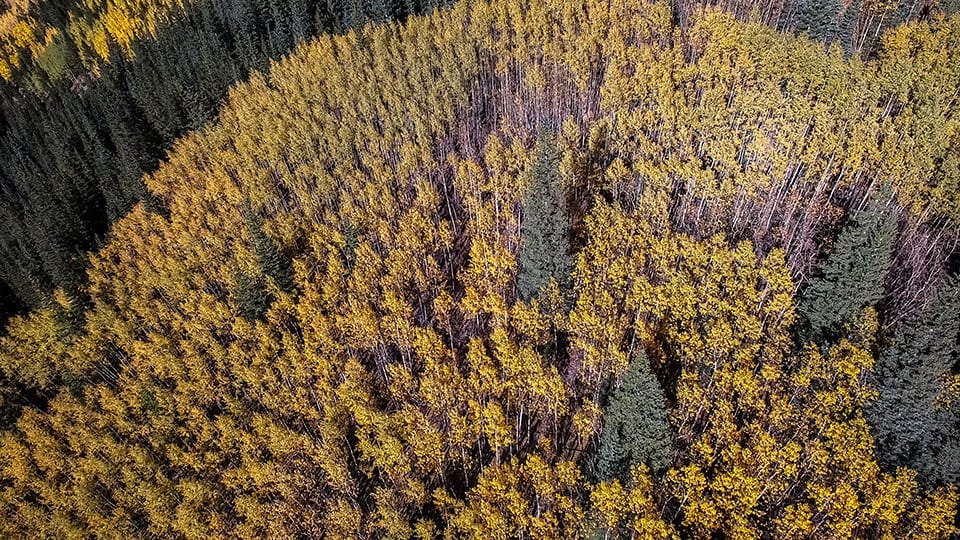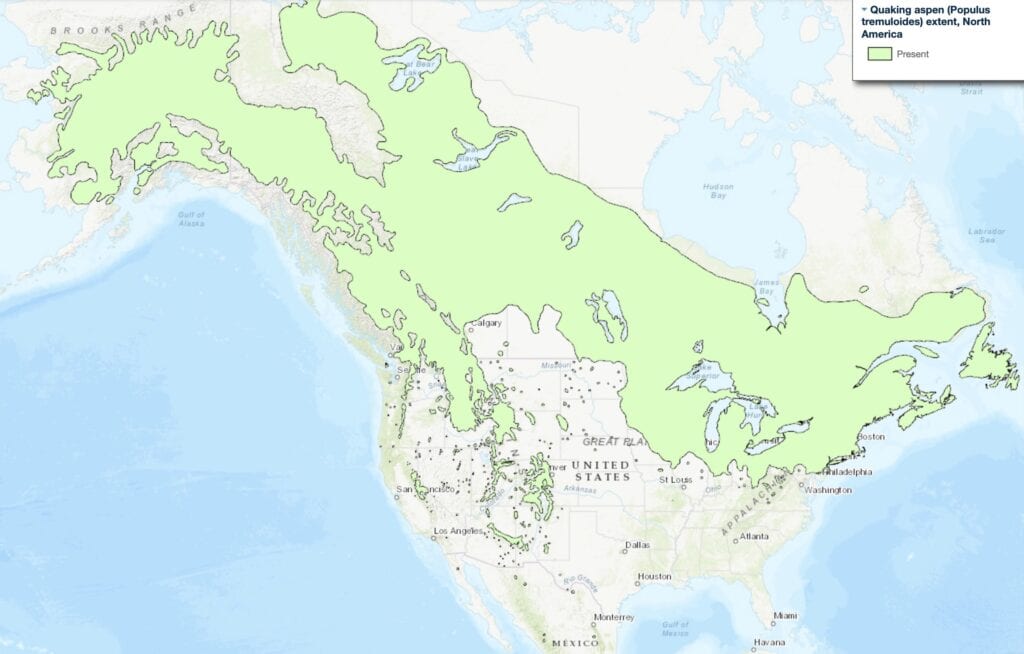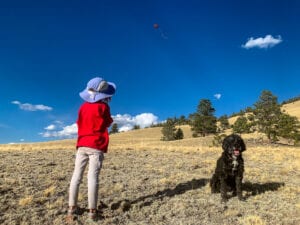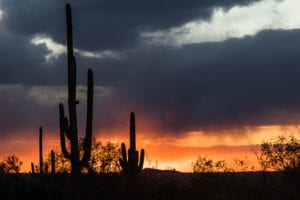Aspen are one of the most beloved trees in the United States, known for the lovely rustling sound of their leaves in a breeze, their unusual white trunks, and their golden hue in autumn.
Aspen are found throughout the American West, in the northern reaches of the Midwest and Eastern U.S., as well as in much of Canada. In fact, the quaking aspen is more widely distributed than any other native tree species on the continent. According to Audrey DeLella Benedict, “Aspen is one of the few plant species that can grow in every ecological zone except alpine tundra.” Oddly, the tree is rather fragile, being susceptible to snow damage and windthrow.
Aspen typically grow by means of root sprouting, which produces clones. Clone groups are distinguishable based on leaf shape, fall color, and other characteristics. An aspen clone called “Pando” in southern Utah is a single organism covering 100 acres, weighing more than 14 million pounds, and clocking in at 80,000 years old.
Aspen’s role in ecosystem
Many plants and animals depend on aspen forests. An individual beaver may consume about 1,500 pounds of aspen bark each year. Fungal diseases are common in aspen, causing the development of cavities that serve as homes for a wide variety of birds like owls, wrens, swallows, bluebirds, nuthatches, and chickadees.
In the winter, small rodents like mice and voles may munch on aspen bark located under the snowpack, where they forage for food while awaiting spring. Elk are also prolific eaters of aspen bark, causing extensive scarring on trunks. Bears sometimes climb aspen trees to dine on bird eggs and nestlings, leaving distinctive claw marks.
Aspen forests are in jeopardy, with many stands in Colorado and Arizona seeing massive diebacks. The decline is thought to be related to droughts.
Sources
- Audrey DeLella Benedict. The Naturalist’s Guide to the Southern Rockies. Fulcrum Publishing: 2008.
- U.S. Forest Service page on Aspen Decline.
- Data Basin. Map of Aspen Range.








